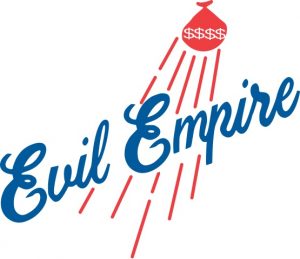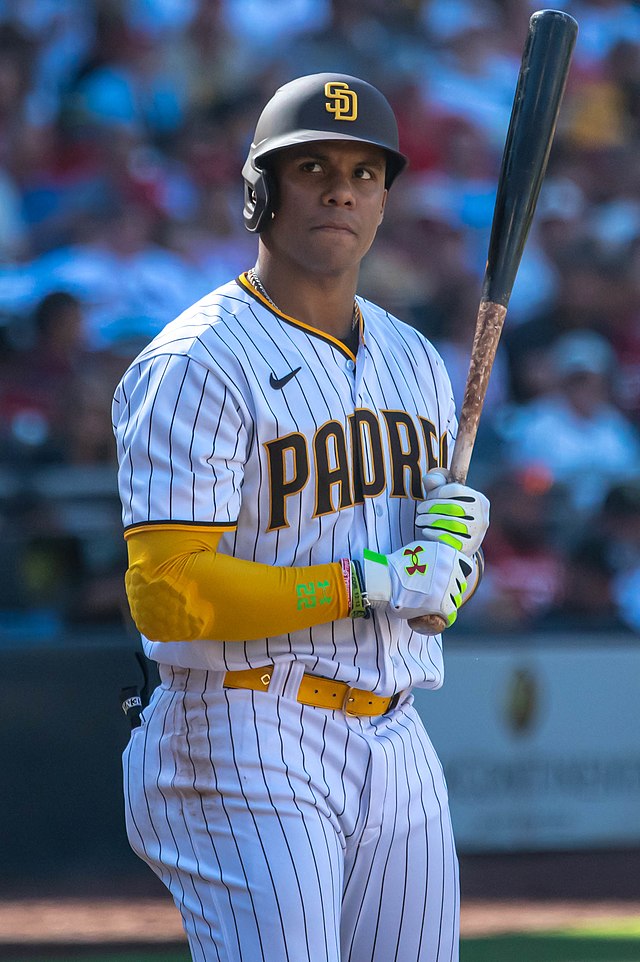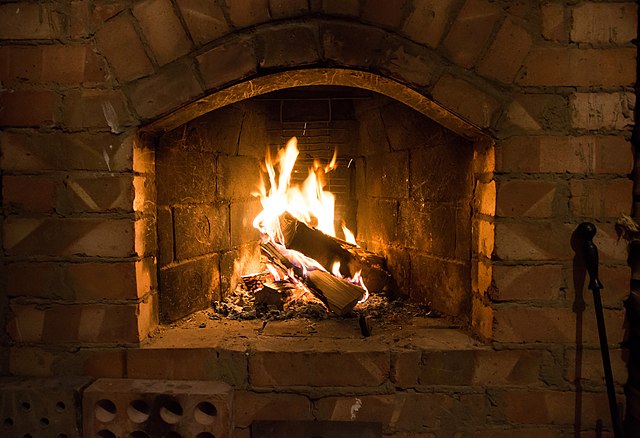
The New York Yankees were officially eliminated from playoff contention following their rain-drenched loss on Sunday afternoon, but the key word there is “officially.” Anyone who had been watching this team closely over the past few months must’ve seen this coming. This has been a flawed team for the past 200 games or so, and even though there was surely some bad luck that contributed to this season’s demise, at no point could anyone have looked at the 2023 Yankees and considered them a serious World Series contender, even though that’s exactly the message we heard from Yankee management coming out of Spring Training.
So what happened? There were some good ideas that backfired. Carlos Rodón, for example, was one of the most sought after free agents of the winter, but injuries postponed his debut until July, and he probably shouldn’t have been on a major league mound that soon. What would the season have looked like if the Yankees had gotten thirty healthy starts from him? Could that have been worth an extra seven wins?
Some bad decisions played out exactly as most expected. The acquisition of Josh Donaldson, for example, was never a good idea, and I’m guessing no one in the baseball world was surprised by how it played out. He was a known clubhouse cancer on the backside of his career. If he had been able to play 140 games a season with an OPS in the .800 to .900 range, his “personality” issues might have been tolerable, but that wasn’t the case. Instead the Yankees got the two worst seasons of his career (predictable for a third baseman in his age 36 and 37 seasons) which included an OPS of .682 in 2022 and .659 before he was DFA’d this August. Calling it a disappointment is like describing Romeo and Juliet as a failed relationship; in both cases the chorus told us exactly what was going to happen.
In some cases, there was just bad luck. Luís Severino was injured for much of the year. Anthony Rizzo fluked into a concussion, played with symptoms for about a month, and then went on the injured list for the rest of the season. Domingo Germán pitched well for much of the season and then threw the 24th perfect game in major league history; five weeks later he showed up at Yankee Stadium so drunk that the team had no choice but to end his season. We’ll likely never see him in pinstripes again. And obviously the unluckiest turn of all came when Aaron Judge, the best player on the planet not named Shohei Ohtani, fractured his toe on an inexplicably placed cement curb in right field at Dodger Stadium, causing him to miss a month of time. Oh, and one last thing. Jasson Domínguez’s torn elbow ligament came after the season had already cratered, but in some ways it was more crushing than any of these other misfortunes.
Just as championship teams can point to a dozen breakout performances and key moments that propelled them to success, so can the 2023 Yankees list all of these things and more as contributing factors in this disappointing season. The problem, though, is that many of these issues have raised questions that must be answered this off-season if the organization wants to get back to the playoffs in 2024.
Here’s an overview of the situation as I see it, beginning with a look at the sure things and then speculating about the rest of the roster.
The Foundation
No franchise in baseball can boast a stronger pairing of a starting pitcher with a position player than the Yankees do with Gerrit Cole and Aaron Judge. Both players are in the primes of their careers, and both are locked into long term contracts, and each player is among the best in the world at what they do. Even though Yankee fans took a while to warm up to Cole, he has been worth every penny of the nine-year contract he signed with New York prior to the 2020 season. If you’re strictly looking to quantify his value with statistics, consider that he’s led the league in starts and pitched 200 innings or more each of the past two seasons, and those have been dominant innings. With one start (probably) remaining this season, he currently leads the league in winning percentage, ERA, starts, innings pitched, ERA+, WHIP, and hits per nine innings. He probably won’t be the unanimous Cy Young Award winner, but he’ll win in a landslide.
All of that is what the Yankees knew they were getting for their millions, but I’m not sure they knew they’d also be getting a second pitching coach. The last time the Yankees had a starting pitcher this good, it was Roger Clemens, but there’s one huge difference between Cole and Clemens. (Okay, two, but that’s not what this is about.) Clemens famously disappeared between starts, as allowed by the organization. Cole, however, appears to be that rare pitcher who is constantly teaching the craft. During his starts this season he’s been guiding young catcher Ben Rortvedt, the rookie who became Cole’s personal catcher midway through the season. In July and August Cole was often seen vigorously shaking off Rortverdt from the mound and barking at him in the dugout, but they seemed to work well together in September. Cole often praised the rookie following starts. Rorverdt’s position on the roster is far from secure, but the growing relationship between the future Hall of Famer and the future journeyman speaks to Cole’s value. More important than that relationship, however, is what we see when Cole isn’t pitching, when he spends nine innings as a professor to the young starters on the Yankee staff, all of whom frequently credit Cole for their success. If we see Clarke Schmidt and Michael King and others develop into solid starters, it will be largely because of what they’ve learned from Professor Cole.
And then there’s Judge. It’s hard to imagine that people once wondered about the player who is now universally seen as one of the five best overall players in the game. In 2022 he had one of the best offensive seasons in history, and he was almost as good this year. He won’t get any MVP votes this season, but you could argue that this year, even more than last, proved just how valuable he is to this team. The forty-five games he missed in the middle of the season doomed the Yankees, but somehow — even while playing hurt — he’s still been brilliant. Sure, there are the thirty-five home runs, but note that Judge has an OPS over 1.000 for the second year in a row, a rare exacta indeed. And while some have been asking for weeks that the Yankees shut him down, he showed this week why that never was going to happen. Even as Yankee fans drifted away from the season, they never drifted away from Aaron Judge. Their phones buzzed and told them about his first inning home run on Friday night, and then again when he hit his second. They raced to their televisions to see his fourth at bat, and they were rewarded with his third home run of the game, capping a 4 for 4 night that also included a double and reminded everyone that there is only one Aaron Judge. You don’t shut down a player like that for the same reason you don’t throw a sheet over Michelangelo’s David. There is a greatness in genius, even when the genius is playing out a string of otherwise meaningless games.
Like Cole, Judge’s leadership will be crucial as the Yankees look to rebuild either with youth or with external options. When he was named Captain after re-signing with the Yankees this winter, the general consensus from the rest of the players was that he had already been the de facto captain, the same as Derek Jeter had been the team leader long before he was officially named. What strikes me about Judge, though, is that his brand of leadership, at least what we see of it, isn’t as natural as Jeter’s. Judge has had to grow slowly into this role, and it still seems to be a work in progress. There’s always a pause before he answers any question, almost as if he’s asking himself how Jeter would respond. He always gets the answers right, and he seems comfortable, but it doesn’t come as easily for him. Jeter, it seems, was born to lead. Judge is teaching himself along the way, and it’s been interesting to watch.
The Supporting Cast
The success or failure of the 2024 Yankees will not be determined by Gerrit Cole and Aaron Judge, even if they’re both able to duplicate their stellar 2023 seasons.
The single most important Yankee next season will be Anthony Rizzo. In a lineup ridiculously devoid of left-handed power, Rizzo’s absence was crushing. Entering his age 34 season, there’s no reason to think that a healthy Rizzo won’t return to what he was before his concussion. He hit 32 home runs with an OPS+ of 132 in 2022, and his home splits look even better, with 19 home runs in 71 games in the Bronx. If the Yankees get more of this next season, the offense will be decidedly different.
Perhaps the most enigmatic player on the Yankee roster is Gleyber Torres, and there’s no telling how he will handle what could be his final season in the Bronx before he heads into free agency. Next season will be his age 27 season, a year typically seen as the peak of a baseball player’s career. Gleyber’s 2019 campaign — at only 22 — seemed to be the harbinger of a Hall of Fame career. With 38 home runs and an OPS of .871, it seemed the Yankees had found their next great player, but things went sideways. When compared to his brilliant first two seasons, the four seasons since can be seen as a disappointment, but it’s important to note that this is a young second baseman with 49 home runs and a 115 OPS+ over the past two seasons. It will be cheaper to let him go and put someone like Oswald Peraza at second base, so that’s probably how this will shake out following 2024. If so, I’ll miss him when he’s gone.
If Torres and Rizzo are healthy and productive in 2024, the Yankees will have some decisions to make regarding Peraza and D.J. LeMahieu. (I don’t expect Isaiah Kiner-Falefa to return, leaving that utility role to Oswaldo Cabrera.) Peraza is too young and (potentially) too good not to play regularly, but the only regular spot will be third base, which would leave LeMahieu without a position thanks to the fact that Giancarlo Stanton has become entrenched at DH.
Aside from the need for more left-handed hitting, this is probably the biggest problem facing the Yankees during this off-season, the $64 million question, if you will. (Coincidentally, Stanton is owed precisely $64 million over the next two seasons, then $54 million over 2026-27, with $20 million of that covered by the Marlins.) With a contract that doesn’t match his production, Stanton isn’t going anywhere unless the Yankees choose to put him out to pasture. Every time Stanton had a nice game or two, reporters dutifully asked Aaron Boone if he thought Stanton was getting on a roll, and Boone would always respond with some variation of the same script: “He looked good tonight, but we’re waiting for him to really lock in. When he gets on one of his rolls, it’s something special.”
The reality is that we should probably begin to talk about Stanton in the past tense. When he used to get on one of his rolls, it was incredibly impressive. But just like there was no legitimate comp for Stanton when he was in his prime aside from Paul Bunyan, we have no one to point to that gives us hope that he can return to his former fearsome self. He will still be relatively young next season at age 34, but it doesn’t seem likely that a muscle-bound, injury prone player like Stanton will somehow awaken memories of the athletic young right fielder that he once was. His last season in Miami was his best, as would be expected from a 27-year-old slugger, and but he hasn’t come close to that season as a Yankee. In fact, he has never been within a hundred points of his 2017 OPS (1.007), and this season he was three hundred points below that high water mark. Worse than that, in terms of outfield athleticism, he looked closer to Bill Buckner than Barry Bonds this season, and while there could be some lingering injury that we haven’t heard about it, he won’t be contending for any Gold Gloves moving forward.
So here’s the dilemma.
Let’s assume that Anthony Rizzo is healthy and plays 140 games at first base. That leaves three players (Torres, Peraza, and LeMaheiu) to cycle through second and third base with very few starts available at DH considering a healthy Stanton (I know, I know) will need at least 100 starts in that spot. Stanton isn’t just a short term obstacle in terms of daily lineup construction; that’s a relatively easy problem to solve. The larger concern is that he’s a long term obstacle in terms of roster construction. Because he can’t be moved, the Yankees might be forced to choose between Torres and Peraza this winter, not next. In an ideal world they’d enjoy 150 games each out of those two in 2024, then let Torres walk if that’s what they decide. (Fans would be wise to remember this log jam when they’re clamoring for the next high-priced free agent. There are always problems on the back end.)
All of this brings us to Anthony Volpe, the shortstop of the future who became, simply, the shortstop after the small sample size of spring training earned him the job. There’s a temptation to look at his year in two halves, before the June 13th chicken parmesan dinner and after, but even if we look at his full season, it’s hard to argue with the young man’s success, even if there are a few glaring questions.
Just for fun, let’s start out on the defensive side of the ball. Defensive stats are notoriously nebulous when you’re looking at only one season, but that’s all we have with Volpe. According to Fangraphs, he ranks thirteenth out of all major league shortstops, just ahead of Corey Seager in fourteenth and significantly ahead of Carlos Correa in fifteenth. Only Wander Franco and top-ranked Dansby Swanson have more defensive runs saved, and it should be noted that of the twelve players ranked ahead of Volpe, only the Mets’ Francisco Lindor has played more innings than the Yankee rookie. Volpe didn’t win the job with his glove, so it’s significant that he’s been above average in the field.
There’s an argument out there that Yankee fans want so badly for Volpe to be good, perhaps even become the next Derek Jeter, that they overlook his flaws as a hitter. I won’t bother to compare Volpe’s numbers to Jeter’s rookie season, because it wouldn’t be fair to compare him to the greatest shortstop in Yankee history, so we’ll just look at him alongside other rookies in 2023. Only eight rookies have more than Volpe’s 21 home runs, and only nine have more than his 60 RBIs, accomplishments that are both probably a bit surprising. If we narrow the focus a bit and look at his post-parm numbers, we find that he’s been slightly above average as compared to all other shortstops — twelfth in WAR, ahead of players like Jeremy Peña, Elly de la Cruz, and Carlos Correa.
One of the glaring questions I mentioned, however, has to with his stolen bases. Perhaps that famous meal weighed him down a bit; Volpe has only ten post-parm stolen bases, limiting a portion of his game that had been dynamic in the season’s first two months. Normally the league catches up with a rookie’s hot start at the plate, but we may have seen the same thing with Volpe’s base running. He never seemed to be a great base stealer, just a smart one. He mastered the hopping-skipping start that Yankees coaches have been teaching, but perhaps that was more gimmick than innovation. It’s possible that just like some young hitters are exposed once the league discovers they can’t hit curveballs, maybe the same thing has happened with Volpe. I have no way of knowing, but early in the season he was on pace to steal sixty bags; we may never see him swipe as many as twenty-five.
Considering all this, Volpe has shown enough that the Yankees don’t need to consider moving him off of shortstop either in favor of Peraza or any other external options. It’s easy to argue that they should’ve signed Correa or Seager or Trea Turner or someone else, but they didn’t. It makes no sense to re-litigate any of those cases. Anthony Volpe is the best option going forward.
The Fix
After Jasson Domínguez exploded on the scene in the first week of September, it seemed like maybe at least one problem was solved. The Yankees had their centerfielder, and they had some much needed left-handed power, albeit from a switch-hitter. Even at the time it seemed a bit silly to pin the organization’s hopes on a twenty-year-old, but with his injury putting the Martian in the background at least until July, that glaring hole in the lineup looms even larger.
The obvious fix for this is Cody Bellinger. Sure, it stings that the Yankees could’ve had him on the cheap last winter, but they should look forward, not back. After his resurgence with the Cubs this season (.305/.355/.531) with 26 home runs and 20 stolen bases heading into his age 28 season, Bellinger is primed for a pay day, and with such an obvious fit in New York — just imagine his left-handed bat hitting behind Judge — his agent Scott Boras must be drooling. Observers estimate that Bellinger could demand something in the neighborhood of $200 million over six or seven years. If that’s the case — and if the Yankees are serious about winning championships — this is a deal that must be done. He solves many problems immediately, and if Jasson Domínguez eventually becomes the player the organization hopes, his ascendancy would mitigate any concerns about the back end of Bellinger’s deal. Domínguez would take over centerfield in 2025 and Bellinger could move over to left. In 2027, after both Rizzo and LeMahieu are gone, he could even become a full-time first baseman. There have been no great Yankee teams without power threats on the left side of the plate. It’s high time they get back to that.
More Fixing
The pitching staff doesn’t demand as much attention as the offense, but there are still concerns. With Cole locked in as the #1 starter and a (hopefully) healthy Rodón at #2, and a (hopefully) healthy Nestor Cortés at #3, there are two spots to fill after that, or four if the Yankees adhere to David Cone’s way of thinking. Clarke Schmidt made significant strides this season, erasing any questions there might have been around him, but the biggest revelation has been Michael King.
When necessity forced King out of the bullpen and into the rotation, he showed why he has never stopped wanting to be a starter. All you really need to know is this. In his six games since being converted to a starter, King has allowed just four earned runs in 28.1 innings while striking out 42 and walking just 4. That translates to a 1.17 ERA with a WHIP under one. There’s no going back on this. He will be in the rotation in 2024, without question, and he just might be great.
The looming question mark is Luís Severino. No Yankee pitcher has endured as many injuries as Severino, but I still hope that the Yankees bring him back, if only because I love rooting for him. That injury history will certainly lower his price tag, but more importantly it will shorten his contract. I can’t imagine any serious contender will offer him more than a two- or three-year deal, which could make him affordable enough for a return to the Bronx. My fingers are crossed.
But the biggest wild card in all this, and perhaps the biggest prize, is 25-year-old Yoshinobu Yamamoto, a potential free agent pitcher from Japan. He has been the best pitcher in Japanese baseball, and while he isn’t Shohei Ohtani, he projects as a solid #2 or #3 pitcher in the major leagues. He has twice won the Sawamura Award as the NPB’s top pitcher, and the Yankees are interested. (So are the other usual suspects, namely the Mets and the Red Sox.) If you wondered why general manager Brian Cashman wasn’t on hand to celebrate the 1998 Yankees a few weeks ago in the Bronx, it’s because he was in Japan scouting Yamamoto; Cashman sat in the front row as Yamamoto threw a no-hitter. Sure, the Yankees could give Ohtani half a billion dollars, but it probably makes a lot more sense to give $60-$100 million to Yamamoto and hope for the best.
The other benefit of this is that Yamamoto’s addition to the rotation would make someone like Clarke Schmidt available as a possible trade chip to get a left fielder. They could even add Torres or Peraza and a prospect or two if they want to shop for someone like Pittsburgh’s Bryan Reynolds.
The Decision Makers
Notably absent from all of this is any speculation about Aaron Boone and Brian Cashman. Recently there have been some baseball insiders opining that the Yankees need a complete organizational overhaul, and while I understand that argument, there’s nothing I’ve seen from Hal Steinbrenner that indicates he might be inclined to take such drastic measures. I don’t think Brian Cashman is going anywhere, and if that’s correct, not only do I assume Boone will be back, I don’t think anything would change even if he were fired.
We’re at a point where baseball managers are simply extensions of the front office. Even Boone’s in-game decisions regarding pinch hitters and pitching changes are likely informed by mountains of analytics and pre-determined organizational theories, and big picture strategies around lineup construction and load management are also data driven. If Cashman were to fire Boone and replace him with someone else, whether it’s Casey Stengel or Casey Kasem, I don’t think there would be much change aside from fewer arguments with the umpires and fewer pop culture references in the press conferences.
The Dream
Finally, here’s the team I hope I get to watch in 2024.
Staring Lineup
3B D.J. LeMahieu (R)
CF Cody Bellinger (L)
RF Aaron Judge (R)
1B Anthony Rizzo (L)
2B Gleyber Torres (R)
DH Giancarlo Stanton (R)
C Austin Wells (L)
SS Anthony Volpe (R)
LF Oswaldo Cabrera (S)
Bench
Oswald Peraza
Estevan Florial
Ben Rorverdt
Starting Rotation
Gerrit Cole
Carlos Rodón
Michael King
Nestor Cortés/Clarke Schmidt/Luís Severino
Yoshinobu Yamamoto





























